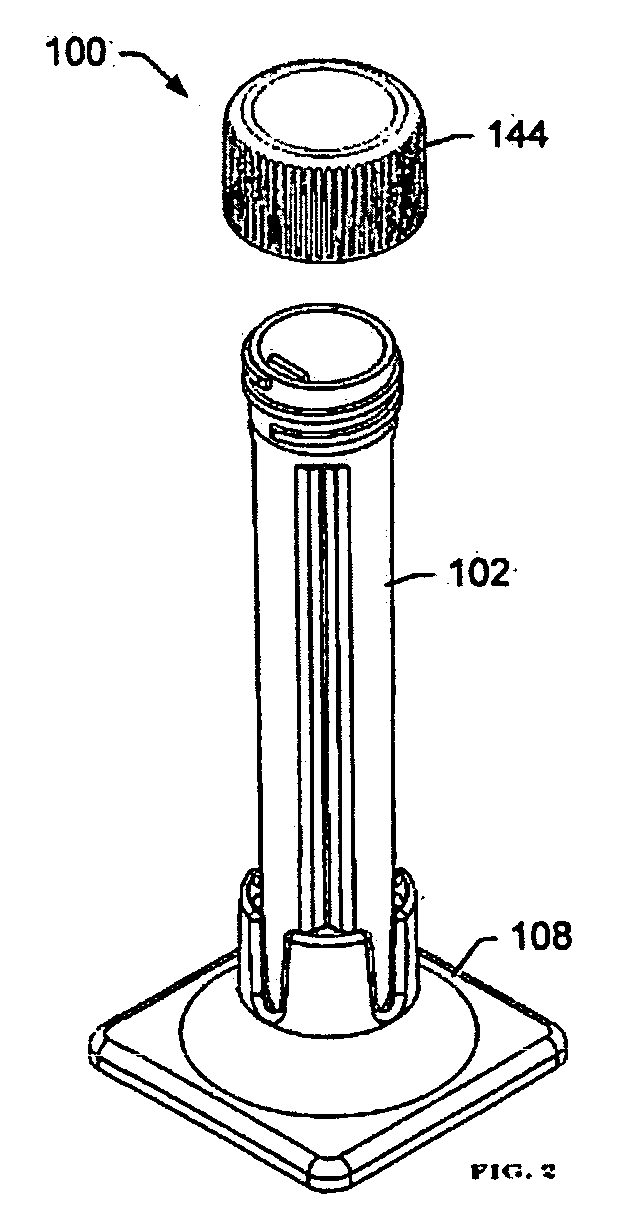Non-invasive respiratory rapid diagnosis method
a rapid diagnosis and non-invasive technology, applied in the field of non-invasive respiratory rapid diagnosis method, can solve the problems of not being able to collect specimens on the swab, not being able to allow adequate visualization or determination, and most currently used respiratory specimen collection methods are fairly invasive and uncomfortabl
- Summary
- Abstract
- Description
- Claims
- Application Information
AI Technical Summary
Benefits of technology
Problems solved by technology
Method used
Image
Examples
Embodiment Construction
[0024]Definitions. Terminology used herein describes particular embodiments only, and is not intended to be limiting. As used in the specification, including the claims, the singular forms “a”, “an”, and “the” include singular and plural referents unless the content dictates otherwise. For example, reference to “a sample” includes one or more samples. Unless defined otherwise, all technical and scientific terms used herein have meanings commonly understood by one of ordinary skill in the relevant art or industry.
[0025]“Analyte” herein generally refers to a chemical or biological agent. Biological agents include, but are not limited to, viruses, diseases, molds, allergens, and living organisms. One example of a chemical agent is lead.
[0026]“Being” herein includes humans and animals.
[0027]“Direct fluorescent antibody” (DFA) herein generally refers to a technique intended to detect the presence of a target analyte in a sample through use of antibodies tagged with fluorescent dye. This ...
PUM
| Property | Measurement | Unit |
|---|---|---|
| size | aaaaa | aaaaa |
| diameter | aaaaa | aaaaa |
| distance | aaaaa | aaaaa |
Abstract
Description
Claims
Application Information
 Login to View More
Login to View More - R&D
- Intellectual Property
- Life Sciences
- Materials
- Tech Scout
- Unparalleled Data Quality
- Higher Quality Content
- 60% Fewer Hallucinations
Browse by: Latest US Patents, China's latest patents, Technical Efficacy Thesaurus, Application Domain, Technology Topic, Popular Technical Reports.
© 2025 PatSnap. All rights reserved.Legal|Privacy policy|Modern Slavery Act Transparency Statement|Sitemap|About US| Contact US: help@patsnap.com


